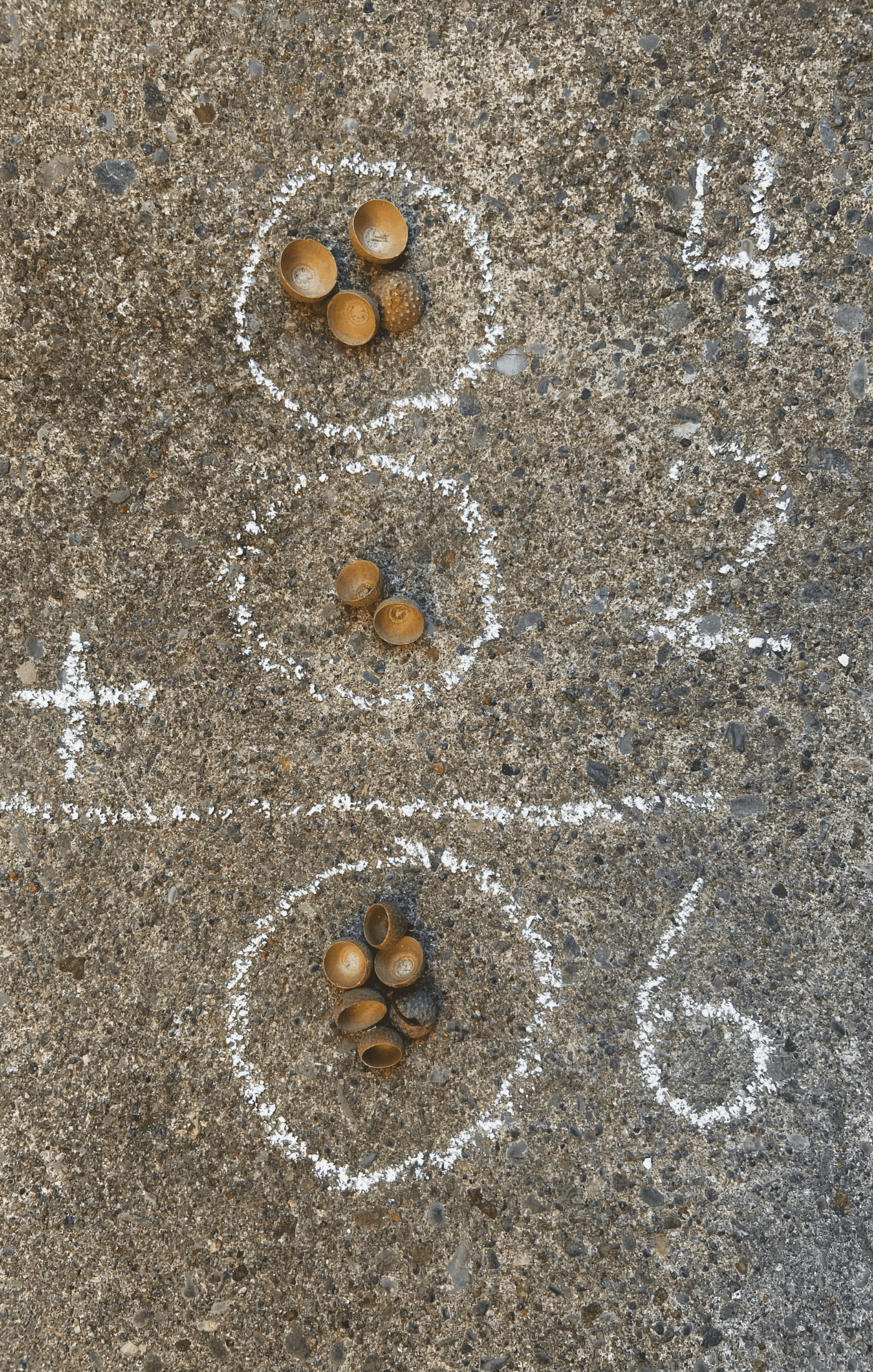Earlier this year I wrote a post outlining which preschool math concepts children would learn in their early years of math education. The concepts they will learn include numbers and counting, addition and subtraction, geometry, sorting and patterns, and measurement and graphing. While these concepts can all be taught from books, worksheets, and other traditional learning materials… Why not take the learning outside?
Searching for and finding math in nature is an excellent way to practice essential skills while creating a deepened connection with the natural world. Plus, outdoor learning offers tactile learning opportunities, which is a big part of Montessori learning. (Read about the benefits of using manipulatives in this article by American Montessori Campus).
Below we have listed a bunch of ideas for outdoor math learning that are perfect for preschool-aged children.
Numbers and counting (1-10)
At the preschool level, your little one will be learning the numbers one to ten. They will learn how to quantify (count), identify and name numbers, order and sequence numbers, and will begin to practice “subitizing” (which is the ability to count by grouping). Below you will find ideas for how to practice each of these mathematical concepts using nature.
Quantify (understanding quantity)
Learning to count is one of the core skills your child will need to learn in mathematics. While you could practice this skill by counting everyday objects, here are two alternative ways to count in nature.
Counting with nature
Grab some chalk and draw 10 circles large enough for your child to fill it with objects. On the bottom, write the numbers from 1-10 with one number per each circle. First, ask your little one to read the numbers. Then, ask them to gather objects to match the numbers. If this is your first time doing this, I would grab a nearby set of objects, say, 2 leaves. Count them together, then ask which circle they belong in. Hopefully, they will put the leaves in the “2” circle!
For a more permanent activity, you could paint numbers onto rocks with your child and use those to represent the number of items that should be in each space.
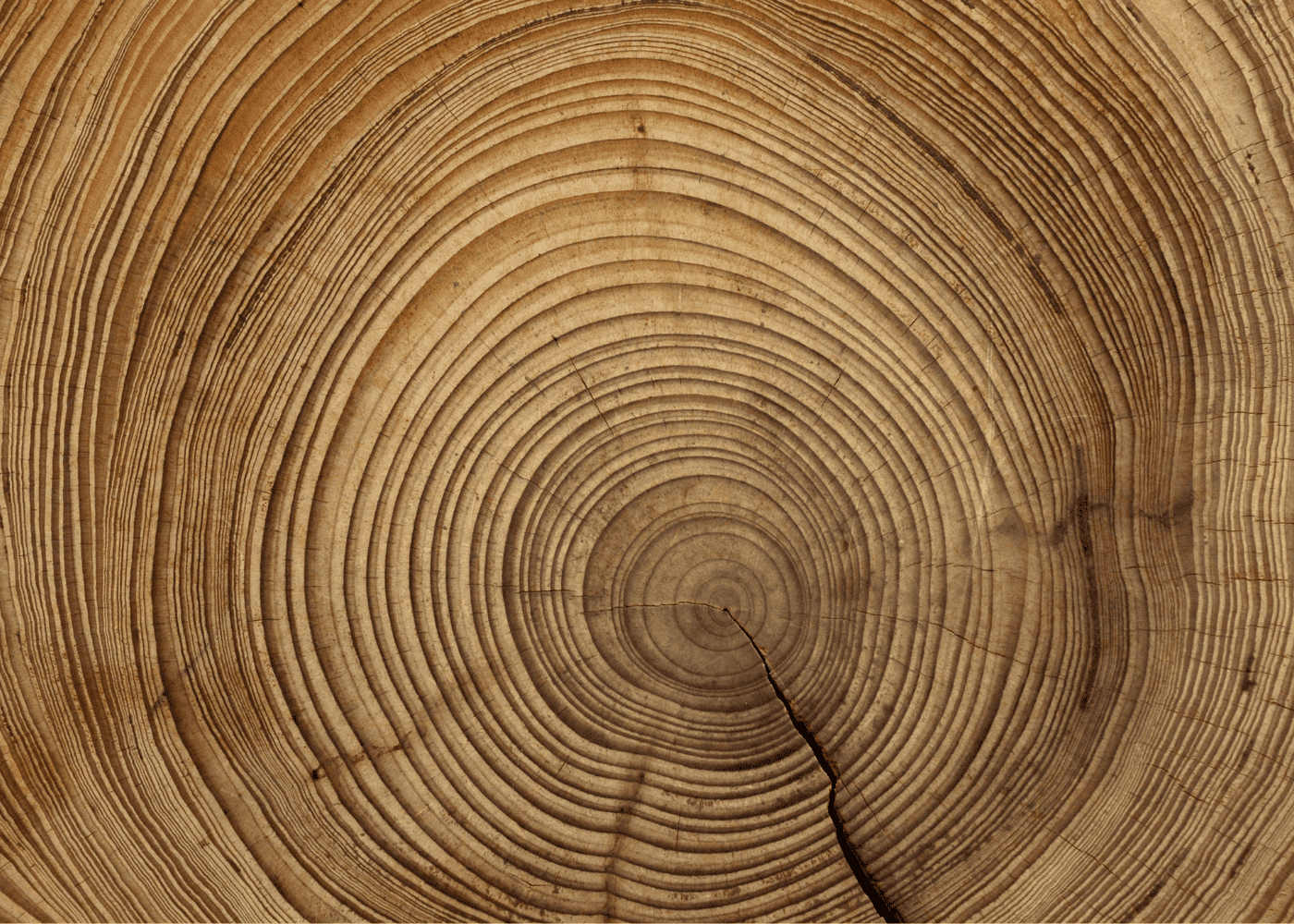
Counting in nature
One of my favorite concepts in nature is that you can tell how old a tree is by the number of rings it has. All you have to do is look at its growth pattern! Now, I am definitely not suggesting you cut down a tree for this activity. But, if there is one that has already been cut in your area, you can easily show this to your child! If you really want to show this and don’t have an example in nature, many craft stores sell natural wood rounds nowadays, too.
To do this, simply count the dark-colored rings in a tree. I love comparing multiple, and it’s also cool to see how the size of the trunk tells a lot about a tree’s age, too. Challenge your little ones to find the oldest tree sample they can! This activity also demonstrates the importance of trees when we think about the history of a forest.
You can also count tons of objects in nature. From the number of bees pollinating a flower to the number of petals on that flower. Ask your little ones what they want to count, as they will have more fun and be more invested if they’re pursuing their own ideas.
Order and sequence
Sequencing is an important mathematical skill that requires kids to put things in order. You can choose how to order objects. Here are some suggestions:
- Collect objects of various sizes and order them from smallest to largest.
- Collect multiple bunches of like itemsand order them from least to greatest based on quantity.
- For example, 1 stick, 2 leaves, 3 rocks, etc. Then, ask what the subsequent number would be!
Subitizing
Subitizing is the mathematical ability to recognize a number of objects without counting them individually. For example, when we see two birds we instantly recognize two birds without having to count (1, 2…). We might also recognize groups of 3, 4, 5, and so on.
Why is this important? Well, it’s a lot more efficient! The ability to automatically recognize groups of objects is an everyday skill that saves a lot of time counting individual objects. It’s also one of the core parts of number sense, which your child will continue to develop throughout their academic experience.
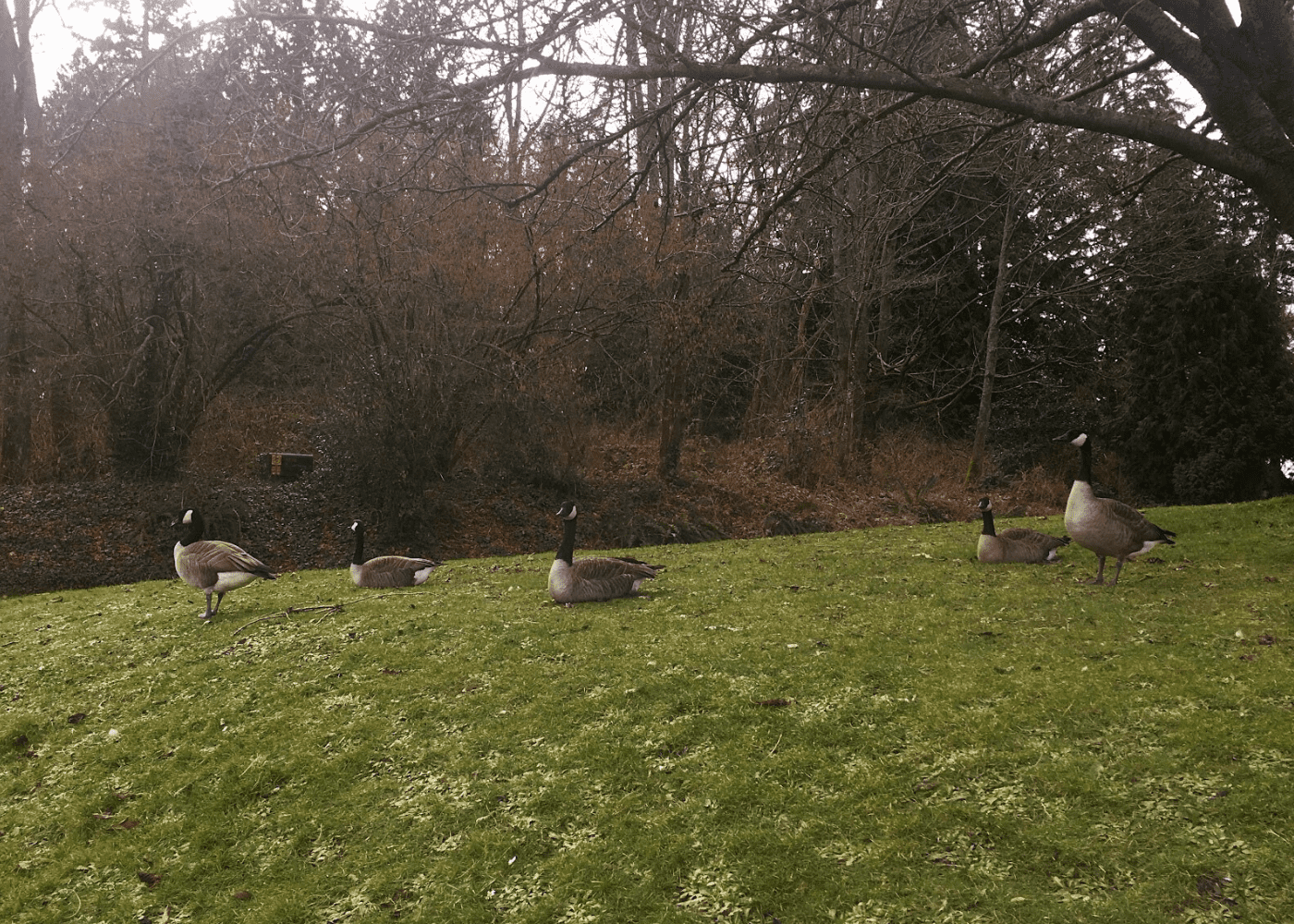
Subitizing in nature
I would suggest starting with the number 1 and moving up once your child displays confidence and ability. Challenge them to find a single object in nature – This could be an animal, a tree, whatever they can find! Then, move to groups of two.
Once they have displayed confidence in numerous number groups, find an area with a large number of objects. You could count flowers in a garden, trees in a park, birds gathered on the sidewalk, etc. Then, ask your child to count the objects. When they have finished, ask them how they counted. Did they count in groups of 2, 3, or maybe 5? Why did they choose that number? Challenge them to count by other numbers, too.
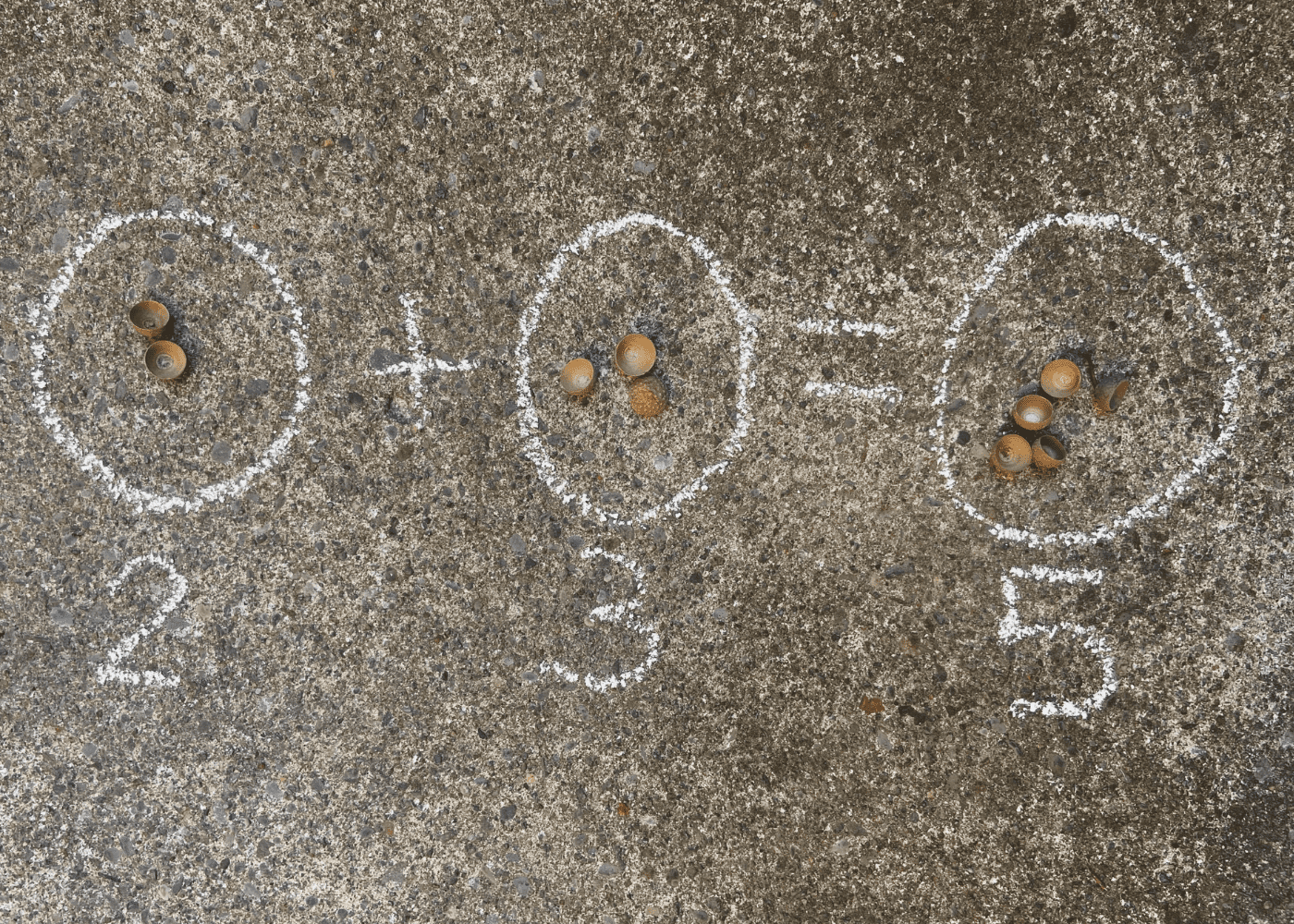
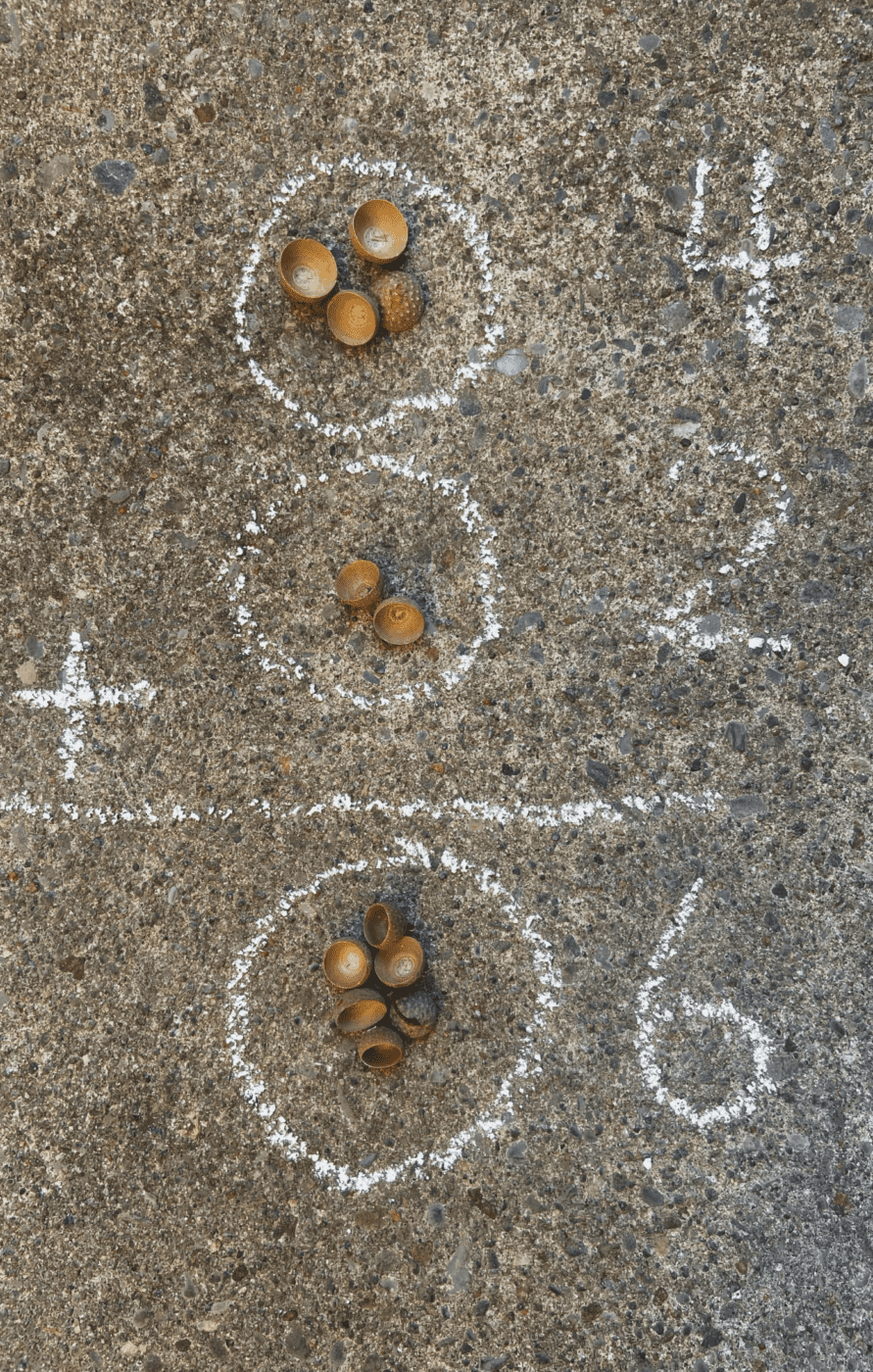
Addition and subtraction
The most important thing to remember here is that your little ones are only working with numbers 1-10, so keep the equations simple!
To do this type of math in nature, I would suggest starting with concrete examples of addition and subtraction. Using manipulatives is an excellent way to deepen a child’s learning, and thanks to the beauty of nature, there are tons of objects we can use! Scholastic wrote this great article on why manipulatives are helpful, in case you’d like to learn more.
Addition and subtraction in nature
- Create small piles of objects to represent math equations (1+1, 1+2, etc.), circle the groups with chalk, and write the equation out too. Then, ask them to solve it!
- This allows children to practice recognizing math equations but lets them identify numbers with objects.
- You could also paint rocks with numbers and use those. This is a fun way to integrate art into the mathematical process.
Once they have a strong understanding of equations using concrete examples, they can move into more abstract equations. An example of this would be finding a grouping of trees and asking “how many trees can you count?” and then asking “how many would there be if we add one more?“
Geometry
Finding geometry in nature is super fun. We can also look for geometric shapes inside of a structure because architecture uses lots of shapes and symmetry in its design. At this stage, focus on 2-D shapes (triangles, circles, squares, etc.).
Here are some of my favorite ways to practice finding geometric shapes in nature:
2-D shapes
- Shape matching: Create little shape cards and ask your child to find the same shape in nature. See how many they can find of each! (You can download my free printable below or find it in Crosson’s Classroom on Teachers Pay Teachers if you aren’t up to making them!)
- Finding multiple shapes in one item: Pick something intricate (like a leaf or a network of tree branches) and see if you can find multiple shapes in the same item.
- Look up! Find shapes in the clouds.
- Create a shapes collage: You can create this on the ground or glue items onto a page to make a collage of shapes. See if they can make a picture out of only one kind of shape (or a few kinds).
- Draw shapes in the earth: Using their fingers or a stick, they can create their own shapes pictures in the dirt or in the sand.
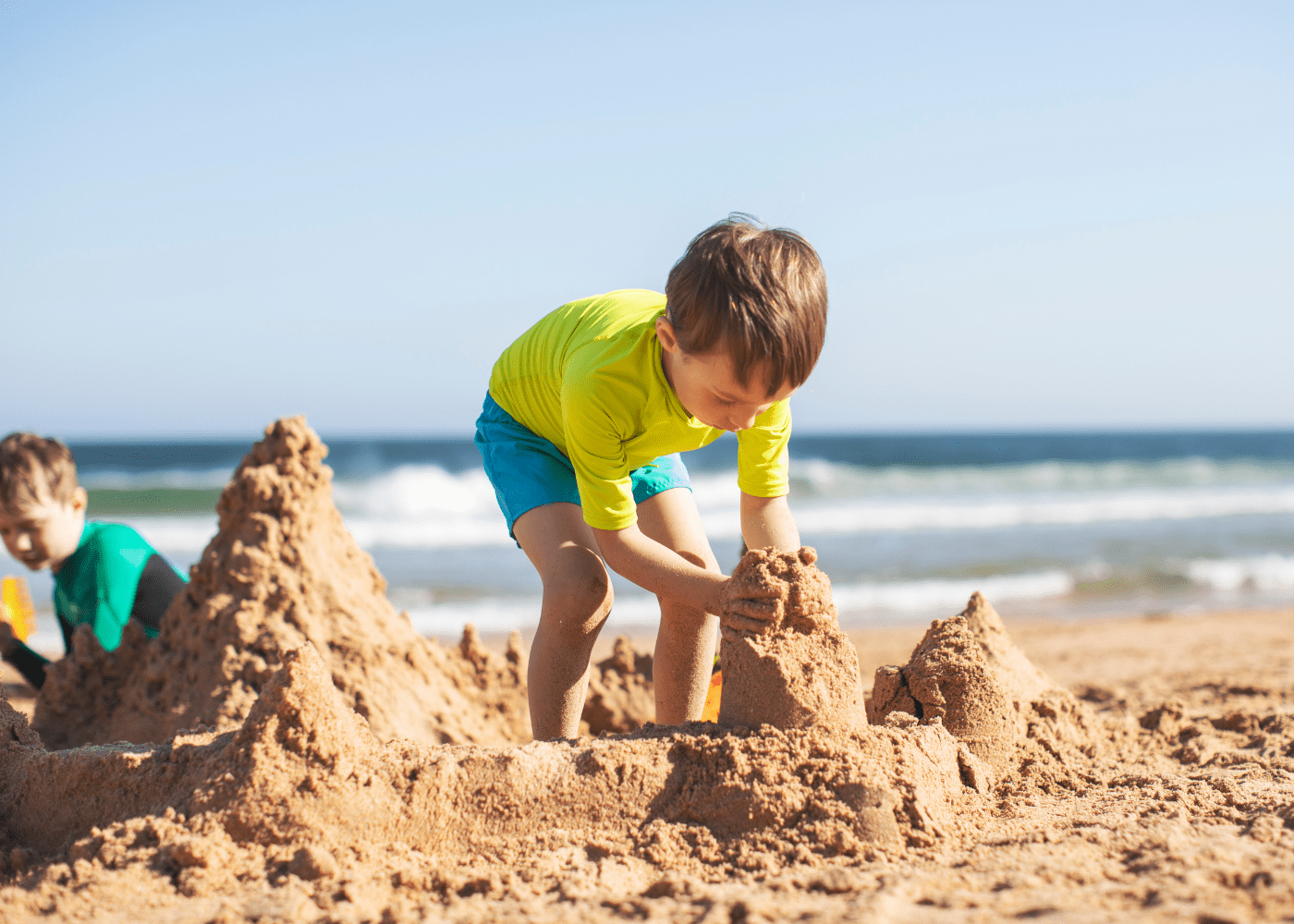
Spatial reasoning
Spatial reasoning is all about relationships between objects. It includes the language we use to describe where items are in relation to one another, helps us navigate the world around us, and includes spatial memorization (remembering where objects are).
BTW: Famly has an awesome article if you want to learn more about the importance of spatial reasoning in early learning. Here are some ways you could incorporate this into outdoor learning:
- Practice building: Practice building and designing using natural objects. Who doesn’t love building a sand castle?!
- A favorite building activity of mine is building rock structures. But, since these structures stem from Indigenous culture, I highly emphasize teaching about the Indigenous culture of building Inukshuks to mark sacred or important places in nature. Click here for a virtual reading of the book “The Gift of the Inuksuk” by Michael Ulmer. (The book starts at 2:56).
- When building, incorporate language like “on top of, beside, etc.” to describe how the shapes are interacting
- Create a map of your community with an emphasis on nature. Where do the animals live? What kinds of plants are there?
Measurement and graphing
Practicing measurement and graphing are a fun way to explore math in nature. You can choose to go paper-free for these activities, or you could bring a worksheet outside to create a blended learning experience. Here are some ideas:
- Bring a ruler outside and let your children measure anything and everything! This will keep them engaged for a long time on its own.
- Measure and compare items. Practice using language like “which stick is the longest/shortest?” and “can you find two objects of the same size?”
- Collect data on a chart. You can track any kind of item you want – Perhaps you are on a farm and want to count how many of each animal there are? Or maybe it’s fall and you want to count the number of red, orange, yellow, and green leaves that you can find.
- For preschoolers, they can use stickers to track their findings. Or they can color in boxes too!
- To download my free graphing printable, use the PDF below or head over to Crosson’s Classroom on Teachers pay Teachers! I left the bottom boxes blank so you can choose what to graph.
Sorting and patterns
When talking about math in nature, one of the most fascinating and beautiful occurrences is the Fibonacci sequence. (or Fibonacci spiral). While this concept is a bit complex for little learners, I think it’s worthwhile for parents and educators to learn and then introduce in an age-appropriate way.
Before we talk about the Fibonnaci sequence, let’s look at something easier for preschoolers: Sorting in nature!
Sorting in nature
There aren’t really any strict mathematical rules about sorting here. It’s more about identifying repeating patterns or finding like items.
A great way to practice this is to focus on shapes (like I mentioned earlier) or colors. This lets kiddos use their background knowledge to practice organizing and grouping items.
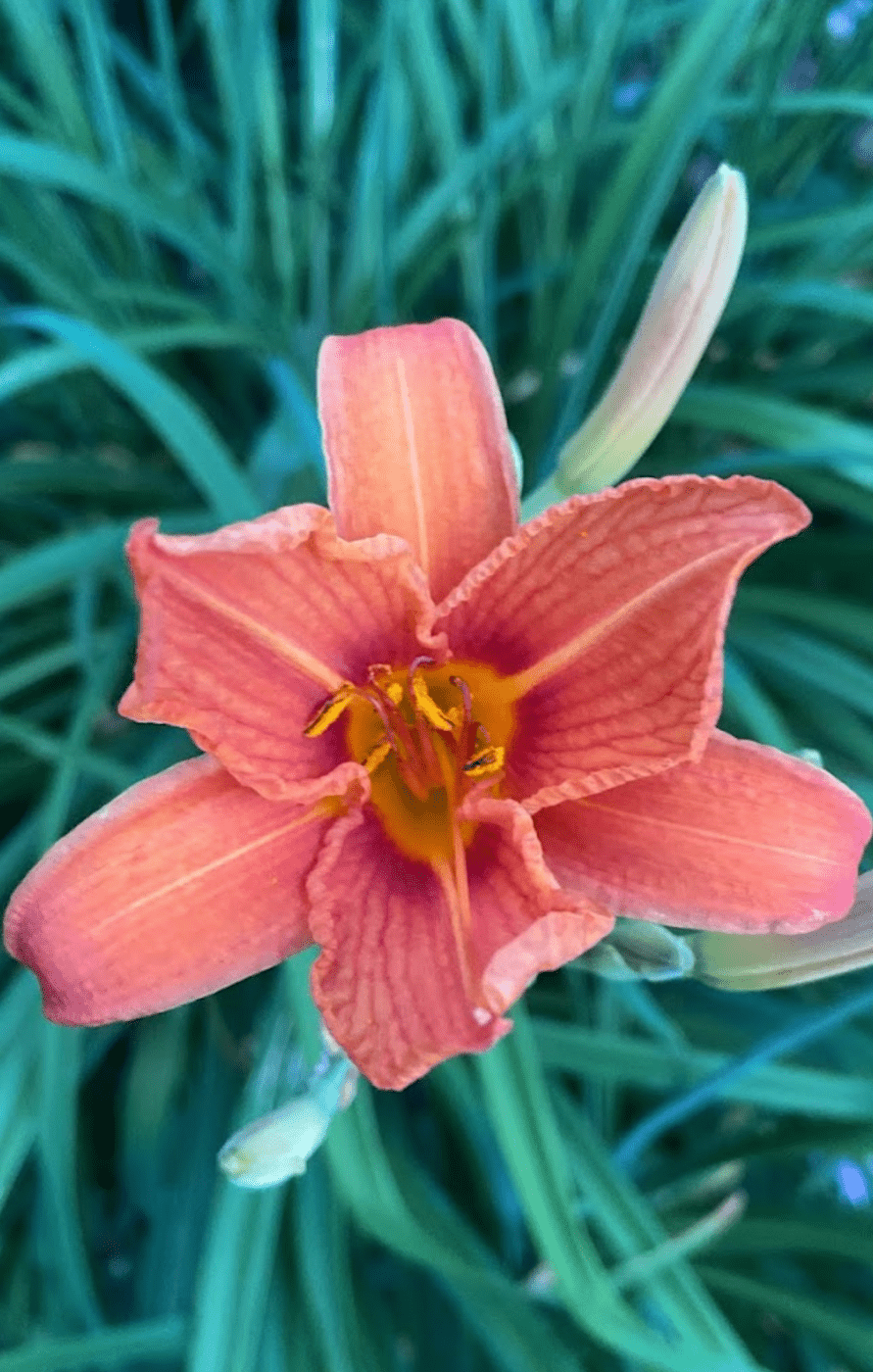
Patterns in nature
Mathematical patterns are found everywhere in nature. In everything from pine cones to river networks, we can find an abundance of patterns outdoors. When practicing math in nature with patterns, it’s important to start out simply. Here are some things to try:
- Search for different types of patterns. Maybe a gardener planted two red flowers, a yellow flower, then two red flowers again? That’s a pattern!
- You can also look for a spiral pattern. Hint: They’re everywhere! Searching for shells or looking closely at the seed pattern in a sunflower are simple examples.
- You can look for like shapes, like stars or spheres (though at this age they will still probably describe them as circles).
What is a “Fibonacci number?”
Earlier I mentioned that the Fibonacci sequence is a naturally occurring mathematical pattern in nature. Again, this is a bit complex for a preschooler, but once you learn it you can pare down the language to help your young learners explore the concept.
Here’s a video that describes what the Fibonacci sequence is and where to look for it.
Essentially, the Fibonacci sequence describes a pattern where the next number in a sequence is found by adding the last two.
Here’s the pattern: 0, 1, 1, 2, 3, 5, 8, 13, 21, 34…. Etc.
So, if we start counting at 0, then 1, and add those together, our next number is 1 (1+0=1). The next number is 2 (1+1=2), then 3, then 5…
But what does this have to do with the natural world? Well, the Fibonacci sequence (this pattern above) is found in many places in nature. Look at some of the photos below to see if you can find the pattern!
BTW: There’s also the “golden ratio,” which is a closely related concept, but it’s a bit much for this post! There are lots of great videos on youtube that explain it, though.
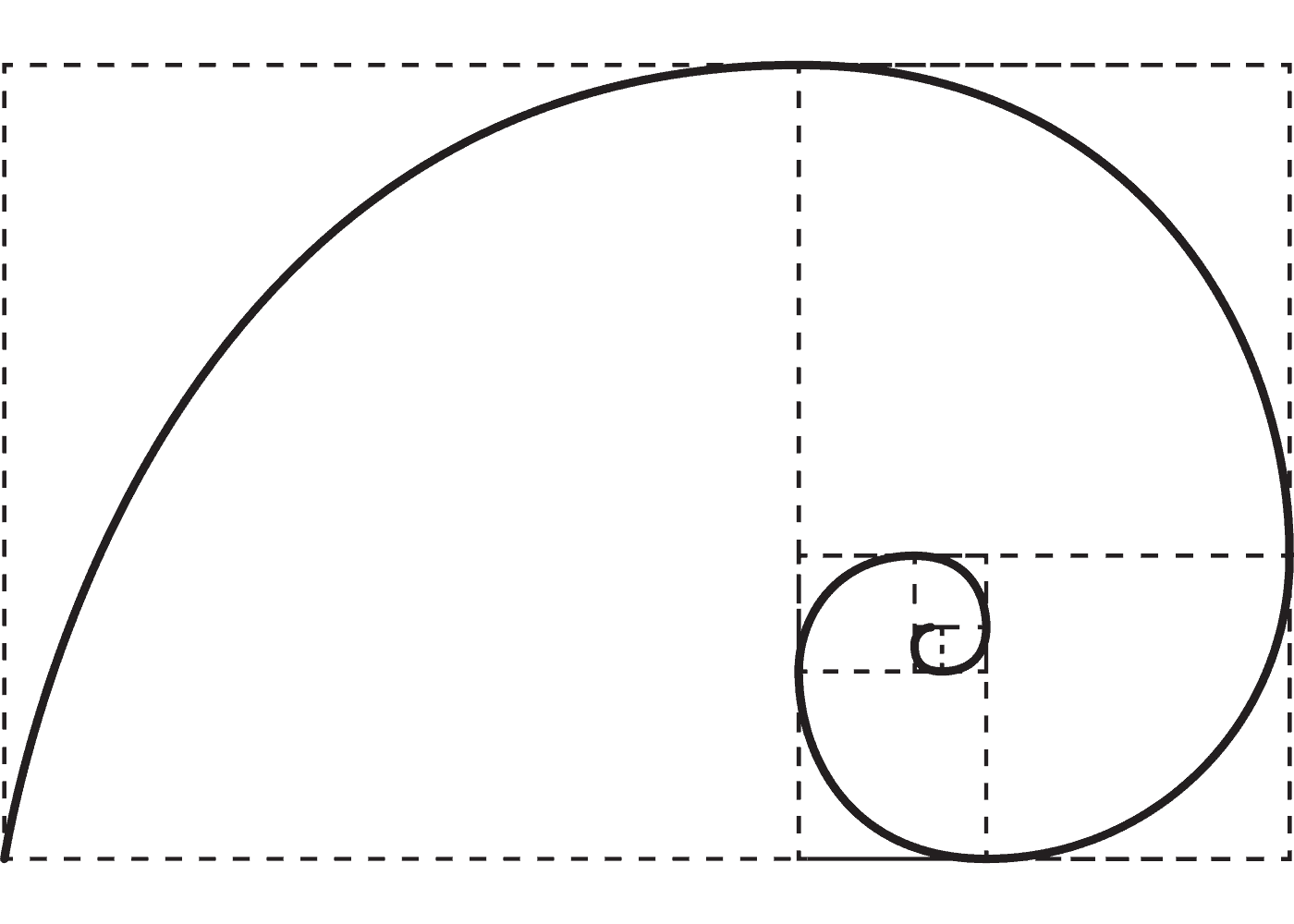
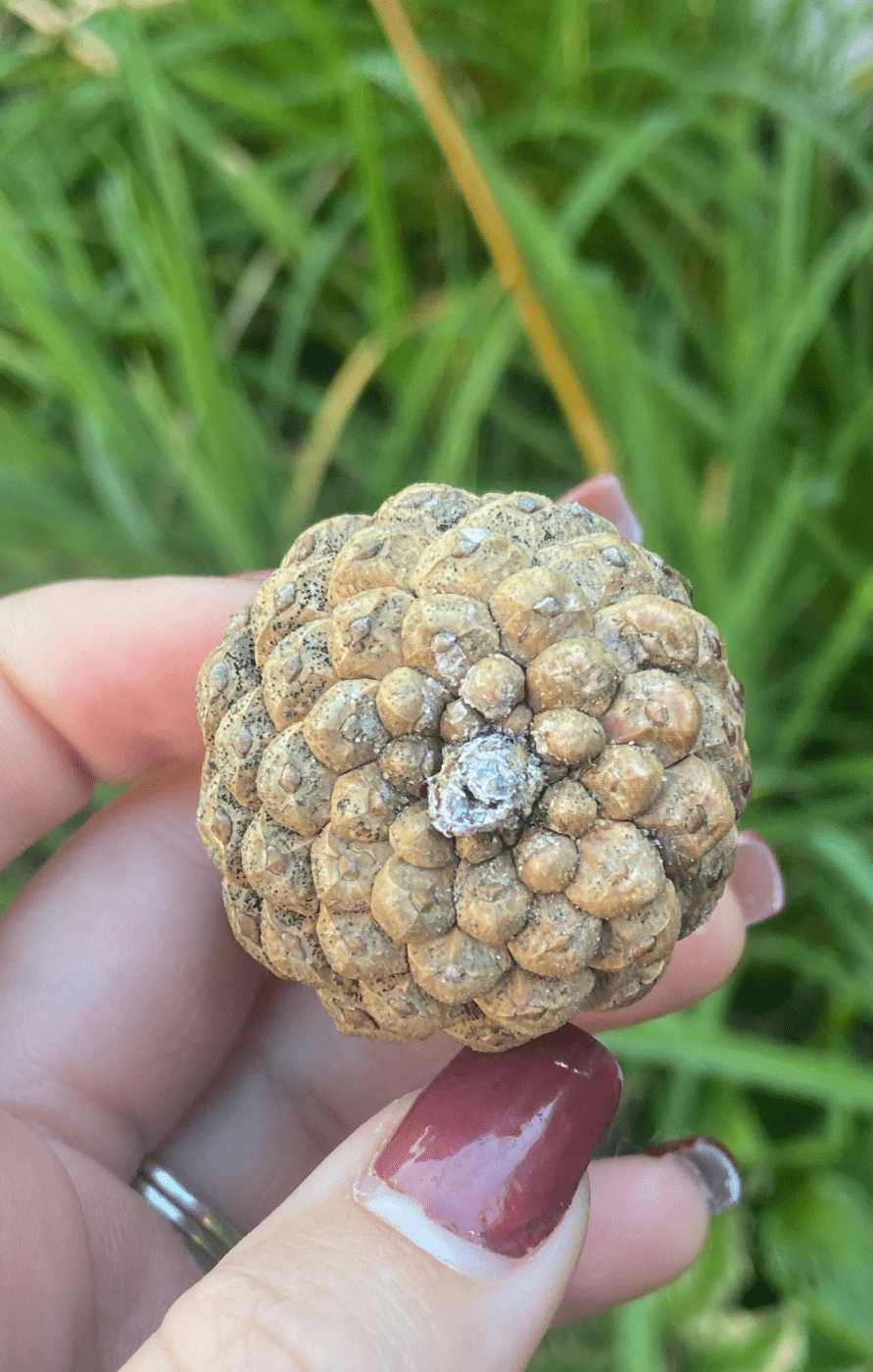
The Fibonacci spiral
When you take those numbers and stack them up (like was shown in the video linked above and the photo above), you find this cool pattern that looks a lot like a nautilus shell! This is also called the “golden spiral.” You can also find the Fibonacci sequence if you look closely at the way a rose spirals, the way a fern leaf curls, or the pattern on the bottom of a pine cone.
Once you start looking closely, you will notice tons of patterns in nature! It is also cool to think about the fact that even in the wildest of nature, you can find predictable patterns in nature.
Conclusion
We hope that you found some fun ways to explore math in nature! By using and observing tactile and natural materials like tree branches, plants, and animals, your little ones will have a hands-on experience as they practice mathematics. This is a lot more engaging, more fun, and will help them retain their learning. And, they will be developing essential skills like counting, subetizing, equating, sequencing, and measureing (to name a few!).
Whether you are counting flower petals, searching for symmetry and shapes, or seeing where you can find the Fibonnaci sequence in nature, there is no shortace of mathematics and patterns in nature. Also, remember: Buildings and infrastructure use natural materials – So if your little one wants to incoporate these into your ‘nature’ class, why not! What is your favorite way to explore math outdoors?
Other math-related posts
Here’s a list of some other kindergarten and preschool-level math posts that you may want to check out!

